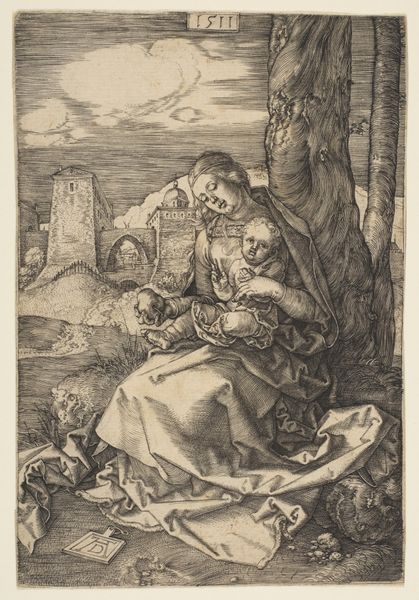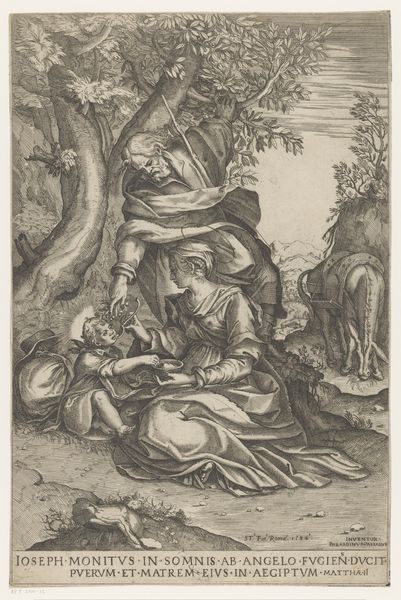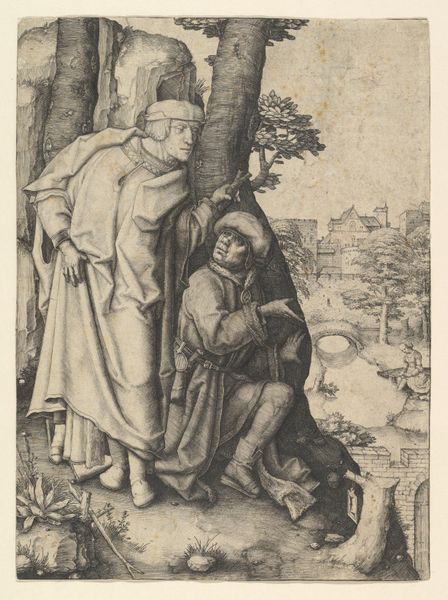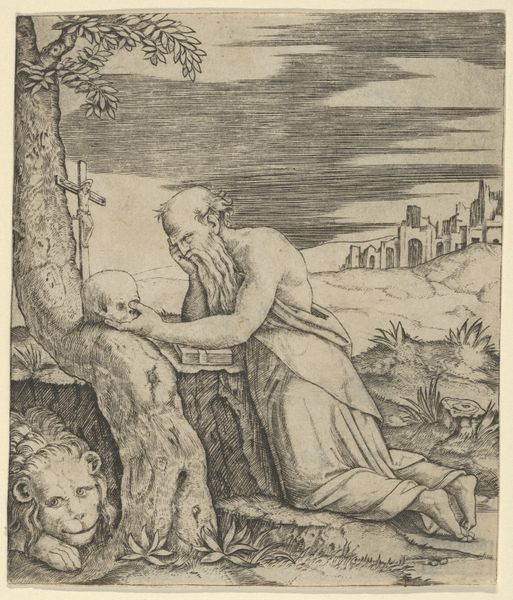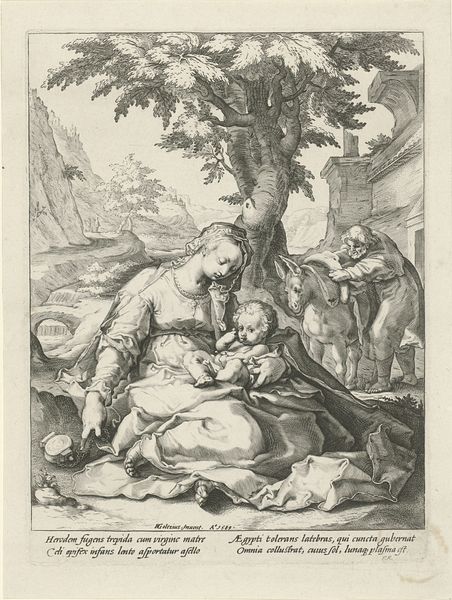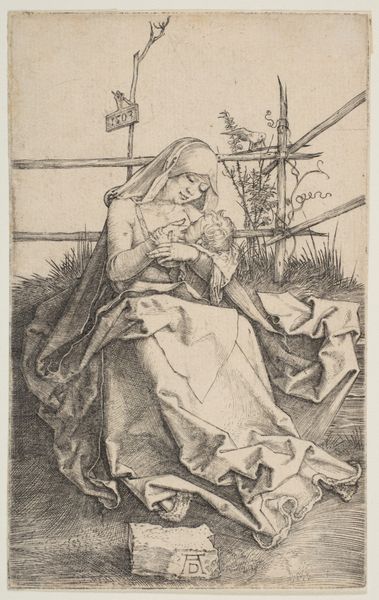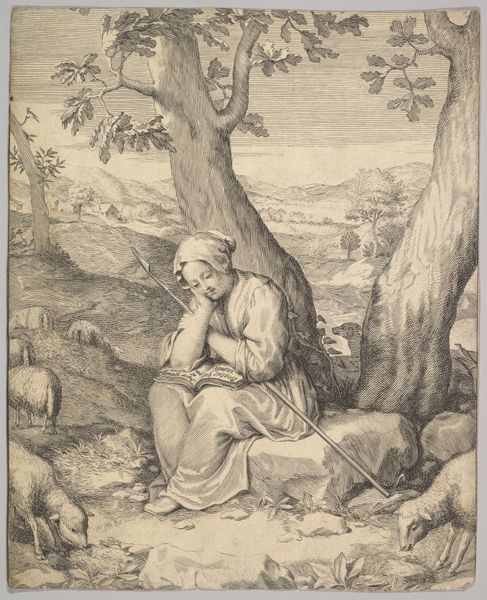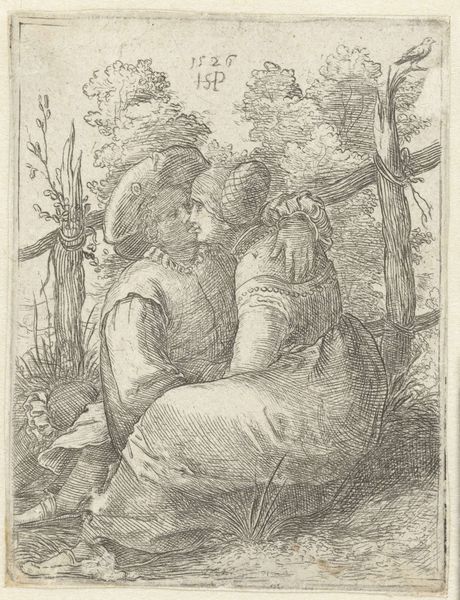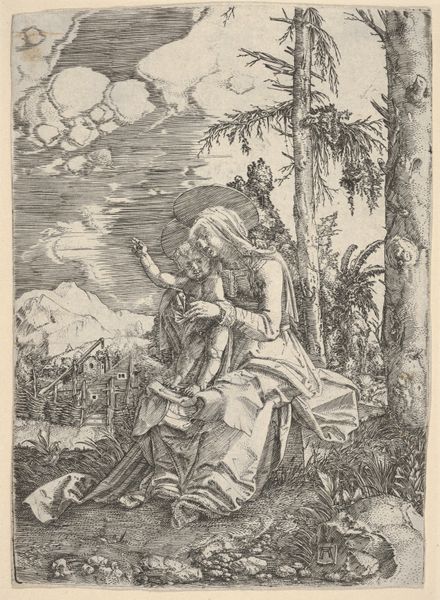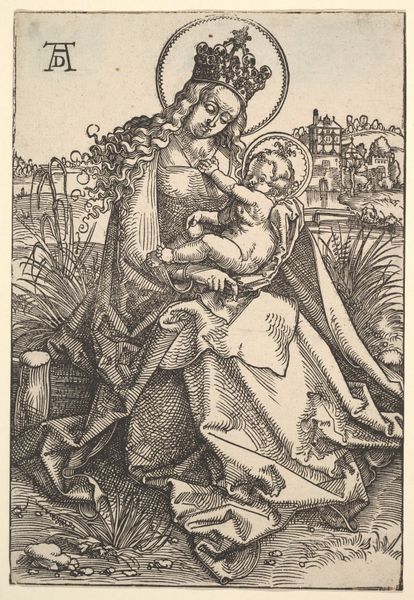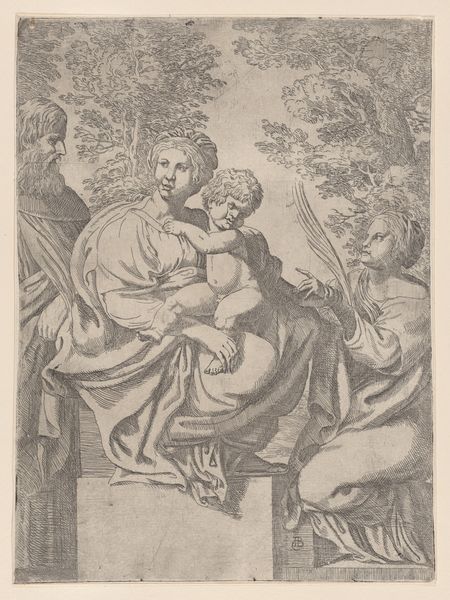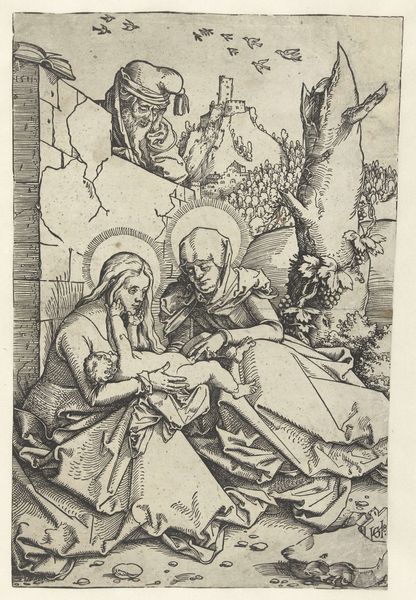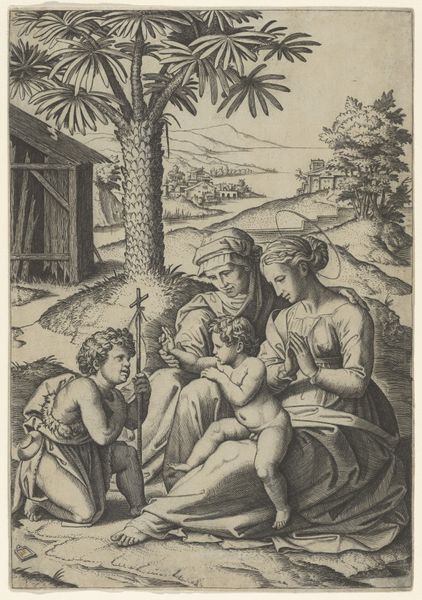
drawing, print, paper, engraving
#
drawing
# print
#
landscape
#
figuration
#
paper
#
pencil drawing
#
history-painting
#
italian-renaissance
#
engraving
Dimensions: 198 × 145 mm (image/sheet, trimmed within platemark)
Copyright: Public Domain
Curator: Here we have Lucas van Leyden's engraving, "The Holy Family," dating to about 1508. It’s currently part of the collection at the Art Institute of Chicago. Editor: It strikes me as an incredibly intimate scene, despite the formality of the subject matter. The shading is so delicate; it almost feels like a dream. The Holy Family looks like a little, warm domestic scene in a cool and muted outdoor setting. Curator: Precisely. The work exemplifies the Italian Renaissance influence on Northern European art, where traditional religious themes are reinterpreted with humanistic values. The landscape isn’t merely background; it participates actively in defining the family’s space. Editor: That landscape feels deliberate, like a protected haven for this group of people. I think about the vulnerability inherent in that setting, even as they are figures of power and religious importance. How might people view them in relation to power dynamics? Is it because of that tree behind them? Curator: The tree could be interpreted symbolically. It anchors them physically and speaks to notions of shelter and lineage, the ‘tree of life’ concept, and of course it references their future role as central religious figures. Engravings such as this were accessible artworks, spreading ideas far more broadly than unique paintings ever could. Editor: Yes, it’s interesting to consider its role in disseminating religious narratives. One must also look at the socioeconomic dynamics surrounding the circulation of this print. It brings to mind questions about who had access to such imagery and how it may have reinforced specific societal beliefs about family and faith, as well as access to the means of production. Curator: That’s key. The artwork's role as a cultural artifact is intrinsically linked to its accessibility, but one should ask to whom the work became available, as well as the other forces in play in regards to reception and circulation. Van Leyden's technical mastery made this possible; notice the use of varied line weights to create depth. Editor: It really does bring such depth to a two-dimensional medium. Considering how artworks like this have historically shaped our perceptions, it feels vital to question whose stories were amplified and whose were marginalized. Examining these Renaissance works today offers crucial insight into the power structures inherent in visual culture. Curator: A potent point. I leave with an understanding of both the historical and the continued impact of van Leyden’s print, not just in its aesthetic value but also its broader implications. Editor: And I think it prompts us to look critically at the narratives being constructed around family, faith, and societal roles, inviting a much-needed dialogue about inclusivity and representation.
Comments
rijksmuseum about 2 years ago
⋮
According to Karel van Mander’s Schilder-boeck (1604), Lucas was a wunderkind and only in his teens when he made this print. The somewhat stiff figures still fit stylistically in the late 15th-century tradition. And yet the endearing family scene shows that already at a young age Lucas could devise a new and original composition for a traditional visual theme.
Join the conversation
Join millions of artists and users on Artera today and experience the ultimate creative platform.
